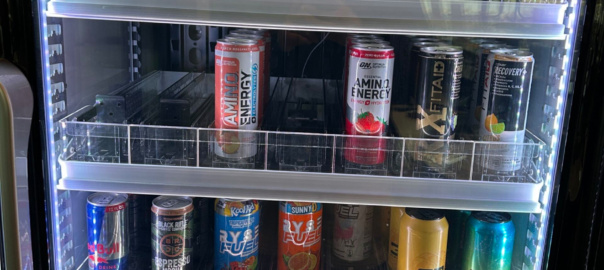The use of caffeine in the fitness industry has recently increased by a significant margin. With approximately 80-90% of the world using caffeine daily, with the average daily intake being around 200 mg, we can see this has become a very popular supplement. As someone who uses caffeine almost on a daily basis, I wanted to share some of the benefits and side effects/down sides of caffeine use, specifically in the field of exercise.
Benefits
1. May increase muscular strength and endurance. Some studies have shown that the ingestion of 3-6 mg/kg of body weight of caffeine can improve strength by 2-7%. This may be small but can be a deciding factor in the completion of a maximal effort repetition. Some data is still varied, and shows minimal effects of caffeine on performance, but depending on the person it can be beneficial.
2. May improve sports performance across wide variety of sports. Caffeine use has been measured in a broad range of sports from basketball to combat sports. These have shown small improvements in certain individuals within their sports, but it is still not consistently proven to work. Similar to muscular strength and endurance, it depends on the person, as genetics do play a big role on the effectiveness of caffeine on performance.
3. May improve focus. Caffeine has been shown to improve cognitive function during various tasks. Whether it is schoolwork, work at your job, or your exercise, caffeine may provide you that extra edge to lock in and meet that deadline. For me personally, I have had plenty of good and bad experiences with the use of caffeine in this aspect. There have been plenty of times where I am able to dial in and bang out my workout or assignment efficiently, while other times it has no effect or even makes me less focused than before. As always, it depends on a case-by-case basis.
Disadvantages
1. Can cause insomnia or difficulty sleeping. The goal of caffeine is to block adenosine receptors and the inhibition of phosodiesterases. This provides us the feeling of having energy through indirectly inhibiting the release of neurotransmitters such as GABA and serotonin. If we consume caffeine too late in the day, it can begin to disrupt our sleep cycles over an extended period of time. Depending on your tolerance levels and dosage, we should NOT be consuming caffeine at least 6 hours before bed, some even say up to 10 hours before bed.
2. Can cause anxiety, depending on the individual. According to a meta-analysis of eight different studies, the consumption of over 400 mg of caffeine can lead to an increased risk of anxiety, even in healthy individuals. From personal experience, I have had pretty severe anxiety from a very large dose of caffeine. So, we need to be careful with our consumption due to these adverse effects.
3. Can lead to addiction with withdrawal symptoms. We can become dependent on caffeine and build up a tolerance level as we continue usage of the substance. Caffeine is considered a psychoactive substance, which is in the same classification as alcohol, nicotine, and marijuana. When a tolerance is built up for any substance, it takes more and more of that substance to feel the same effects as before. If we decide not to consume caffeine on a given day, we may feel withdrawal symptoms such as headache, fatigue, and irritability.
Nico










